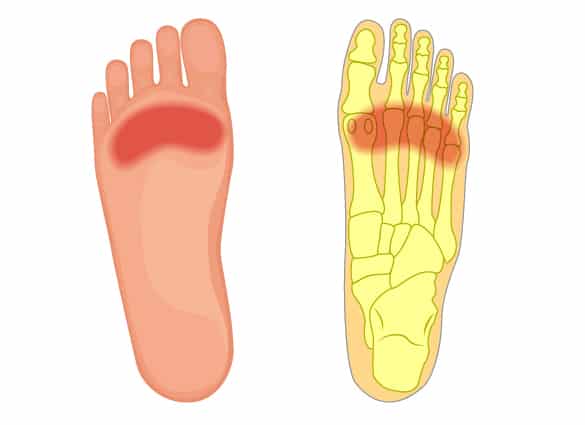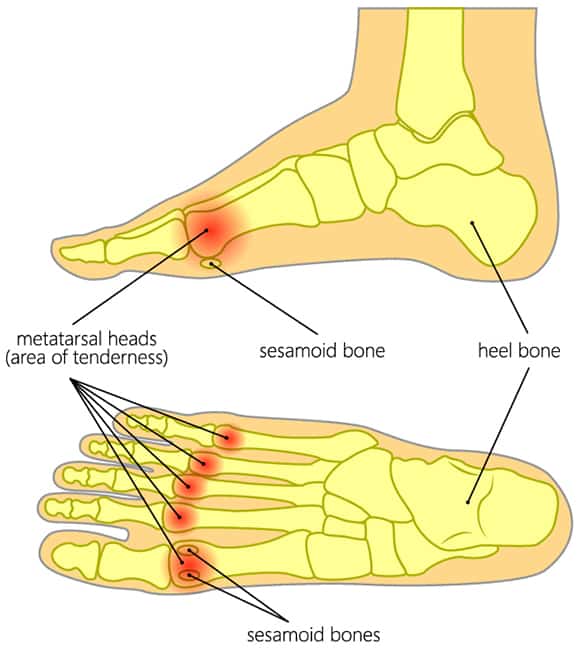
Pain beneath the forefoot
Metatarsalgia is a general term for pain beneath the ball of the foot, or the area just before the toes. The pain is may be located beneath the second, third and fourth metatarsal heads, or may be more isolated at the first metatarsal head behind the big toe.
What are the symptoms of Metatarsalgia?
The main symptom of metatarsalgia is ball-of-foot pain that typically:
- presents as a dull ache, much like a bruise
- may cause you to favour the outside edge of your foot
- worsens when walking barefoot, especially on hard surfaces
- improves with good running shoes, especially those with forefoot cushioning
Onset is usually gradual, but may be sudden if the result of trauma to the ball of the foot.


What are the Causes of Metatarsalgia?
Metatarsalgia is usually the result of an abundance of pressure on one area of the foot, but the cause of this pressure needs to be investigated by your podiatrist. Bunions, hammertoes, short metatarsal bones, high-arched feet, stress fractures and arthritis are all possible causes of metatarsalgia. It is important to see your podiatrist if you think you may be suffering from metatarsalgia.
What is the Treatment for Metatarsalgia?
Following investigation of its cause, your treatment may include:
- rest from aggravating activities
- ice to reduce inflammation
- footwear changes to absorb shock and help support your feet
- custom orthotics – are one of the one of the most important means of treating metatarsalgia, because they can both reduce pressure on the painful area on the ball of your foot, and correct any walking abnormalities that may have caused or exacerbated your condition.
- Foot Mobilisation Technique (FMT)
- THOR Low Level Light Laser Therapy
- Avoid hard floor surfaces and use OOFOS recovery footwear for shock absorption
- Dry needling
If you suspect you have metatarsalgia, or are experiencing any pain under the ball of your foot, contact us.
Find out about Morton's or Intermetatarsal Neuroma.


